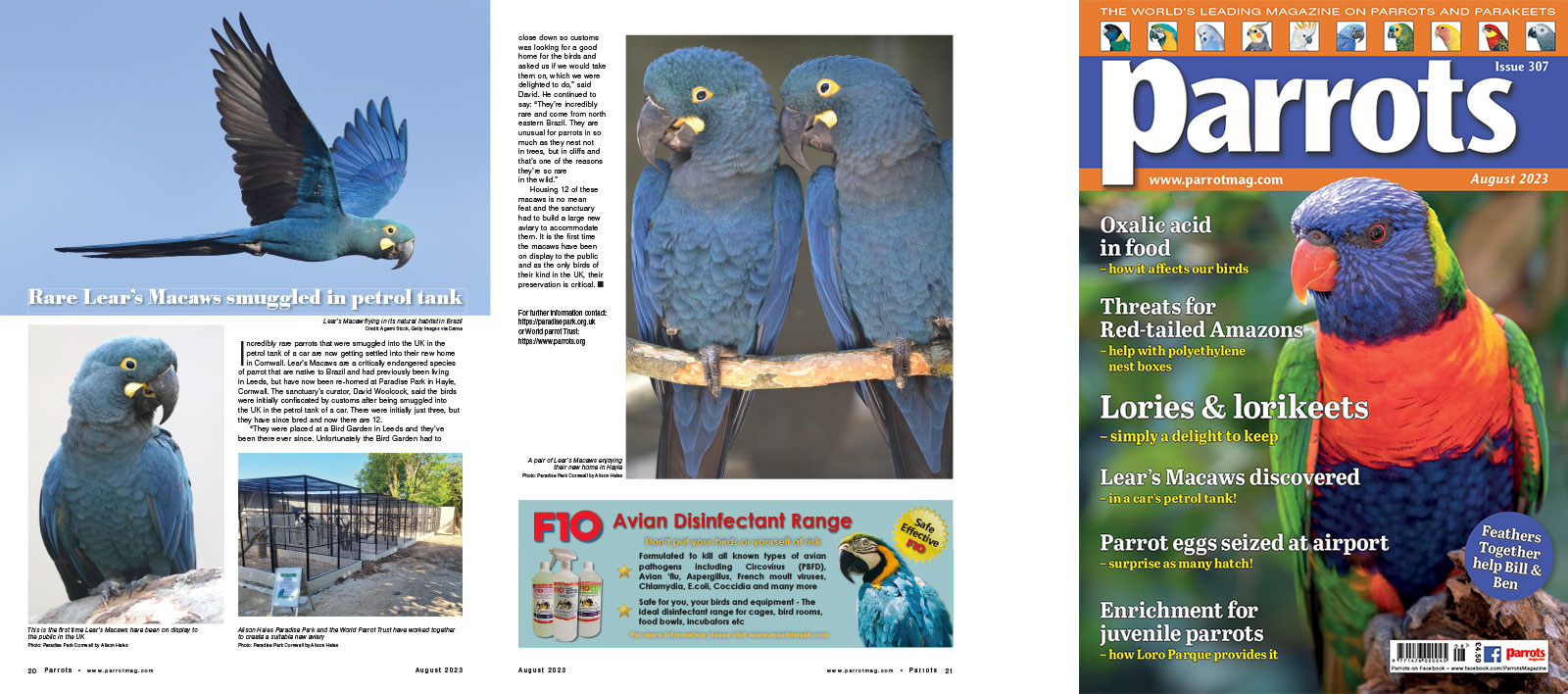
Incredibly rare parrots that were smuggled into the UK in the petrol tank of a car are now getting settled into their new home in Cornwall. Lear’s Macaws are a critically endangered species of parrot that are native to Brazil and had previously been living in Leeds, but have now been re-homed at Paradise Park in Hayle, Cornwall. The sanctuary’s curator, David Woolcock, said the birds were initially confiscated by customs after being smuggled into the UK in the petrol tank of a car. There were initially just three, but they have since bred and now there are 12.
“They were placed at a Bird Garden in Leeds and they’ve been there ever since. Unfortunately the Bird Garden had to close down so customs was looking for a good home for the birds and asked us if we would take them on, which we were delighted to do,” said David. He continued to say: “They’re incredibly rare and come from north eastern Brazil. They are unusual for parrots in so much as they nest not in trees, but in cliffs and that’s one of the reasons they’re so rare in the wild.”








Parrot Chat
Buyers Guides
Breeding articles